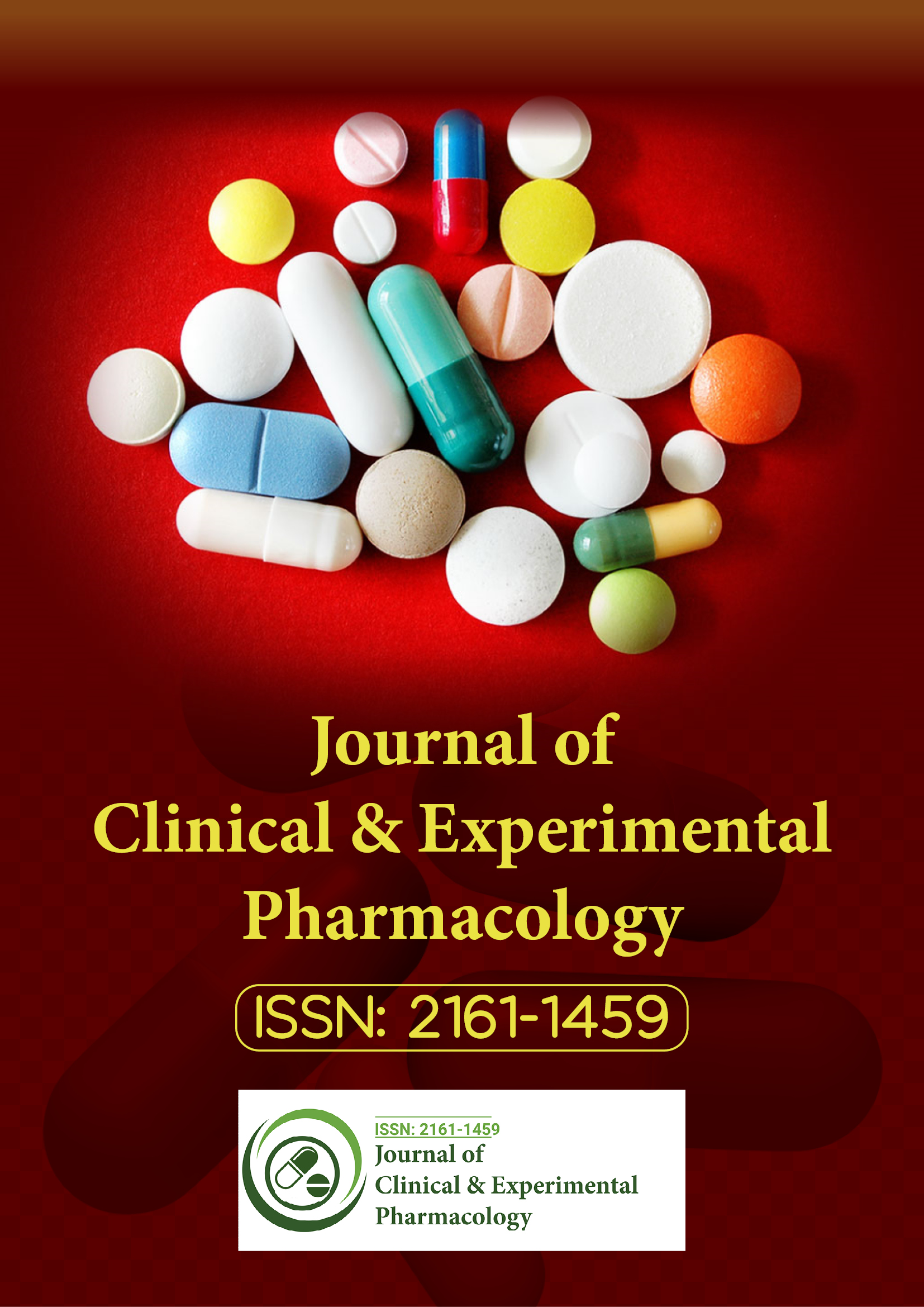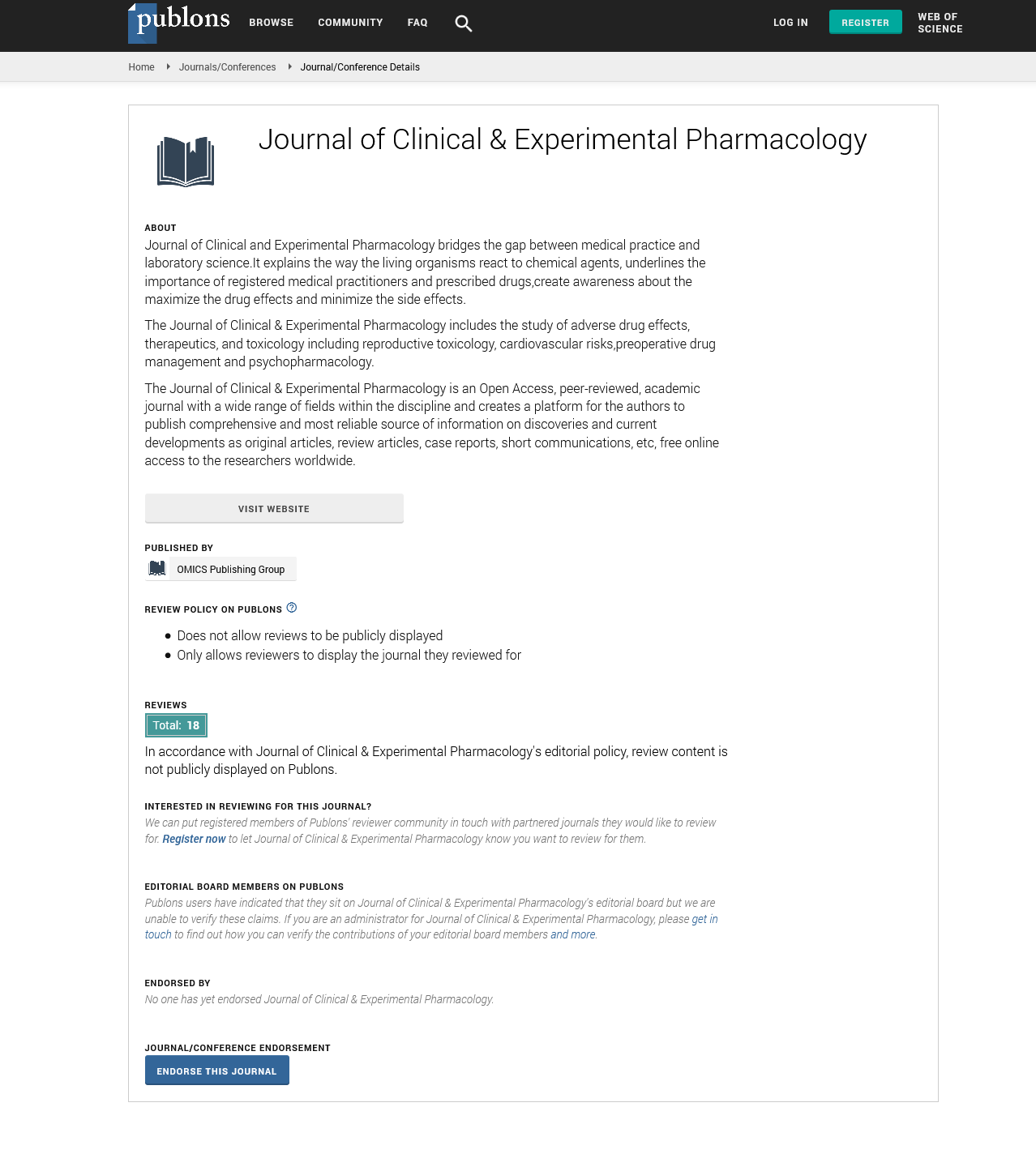Indexed In
- Open J Gate
- Genamics JournalSeek
- China National Knowledge Infrastructure (CNKI)
- Ulrich's Periodicals Directory
- RefSeek
- Hamdard University
- EBSCO A-Z
- OCLC- WorldCat
- Publons
- Google Scholar
Useful Links
Share This Page
Journal Flyer

Open Access Journals
- Agri and Aquaculture
- Biochemistry
- Bioinformatics & Systems Biology
- Business & Management
- Chemistry
- Clinical Sciences
- Engineering
- Food & Nutrition
- General Science
- Genetics & Molecular Biology
- Immunology & Microbiology
- Medical Sciences
- Neuroscience & Psychology
- Nursing & Health Care
- Pharmaceutical Sciences
Design and synthesis of benzimidazoles clubbed with oxadiazole: Searching for new anticancer agents
International Conference and Exhibition on Pharmacovigilance & Clinical Trials
October 1-3, 2012 DoubleTree by Hilton Chicago-North Shore, USA
Mohammed Rashid
Posters: Clin Exp Pharmacol
Abstract:
Purpose: Cancer is a collection of different life threatening diseases characterised by uncontrolled growth of cells, there is an urgent need for novel effective drug regimens for the treatment of cancer because the current chemotherapy suffers from a slim therapeutic index, with significant toxicity from effective drug doses or tumor recurrence at low drug doses. Therefore, several benzimidazoles having 1,3,4-oxadiazole moieties were synthesized and screened for their in vitro anticancer activities at National Cancer Institute (NCI), USA. Methods: The different derivatives of benzimidazole bearing 1,3,4-oxadiazole moieties were synthesized under microwave irradiation, done in a scientific microwave synthesizer (model No. CATA-R, Catalyst systems, India) at a power level of 6 (60%, 420 W) for 6-13 min. The structures of all the compounds were established on the basis of FT IR, 1H NMR, 13C NMR, and Mass spectral data and found in full agreement with the proposed structures. The elemental analysis results were within ?0.4% of the theoretical values. The anticancer activity of synthetic compounds were screened at National Cancer Institute (NCI), USA against full NCI 60 cell lines panel representing on full nine human systems as leukemia, melanoma and cancers of lung, colon, brain, breast, ovary, kidney and prostate in accordance with their applied protocol (used SRB assay). The result is given in three calculated response parameters, GI50 (Growth inhibitory activity), TGI (Cytostatic activity) and LC50 (Cytotoxic activity). Results: The compounds Ib-A18 (NCS: 759205) exhibit remarkable growth inhibition at a single dose (10μM) and further selected for anticancer screening at five dose concentrations (0.01, 0.1, 1, 10 and 100μM) against full NCI 60 cell panel with GI50 values between 0.79-17.8μM. With regard to the sensitivity against some individual cell lines, the compound showed high activity against MDA-MB-468 (Breast Cancer), A498 (Renal Cancer) and HOP-92 (Non-Small Cell Lung Cancer) with GI50 0.797, 1.53 and 1.77 and less sensitivity against SNB-75 (CNS Cancer), DU-145 (Prostate Cancer) and SNB-19 (CNS Cancer) with GI50 18.7, 17.8 and 17.4 μM, respectively. The highest growth inhibitory activity was observed against the Breast Cancer MDA-MB-468 cancer cell line with GI50 less than 1 μM (0.797). Conclusion: The screening result data obtained from NCI indicated that the compounds 1b-A18 (NSC: 759205), 1-(1H-benzo [d] imidazol-2-yl)-3-(5-(2,4-dichlorophenyl)-1,3,4-oxadiazol-2-yl)propan-1-one, showed maximum growth inhibition and found to be the most active candidate of the series. Therefore, further studies on this compound continue in our research laboratory to acquire more information about QSAR. Finally it is conceivable that further derivatization of these compounds could be result to produce more selective anticancer agents.
Biography :
Mohammed Rashid undersigned pursuing PhD degree under the guidance of Dr. Asif Husain (Associate Prof.) from Jamia Hamdard University New Delhi, India. His current research work is focused on Studies on some heterocyclic compounds as potential anticancer agents. He have been published twenty four research and review article with good impact factor in various reputed journals. Recently one of his research manuscripts have been accepted in European Journal of Medicinal Chemistry for publication. He is selected for project fellow under Major Research Project scheme of University Grant Commission, Government of India.

